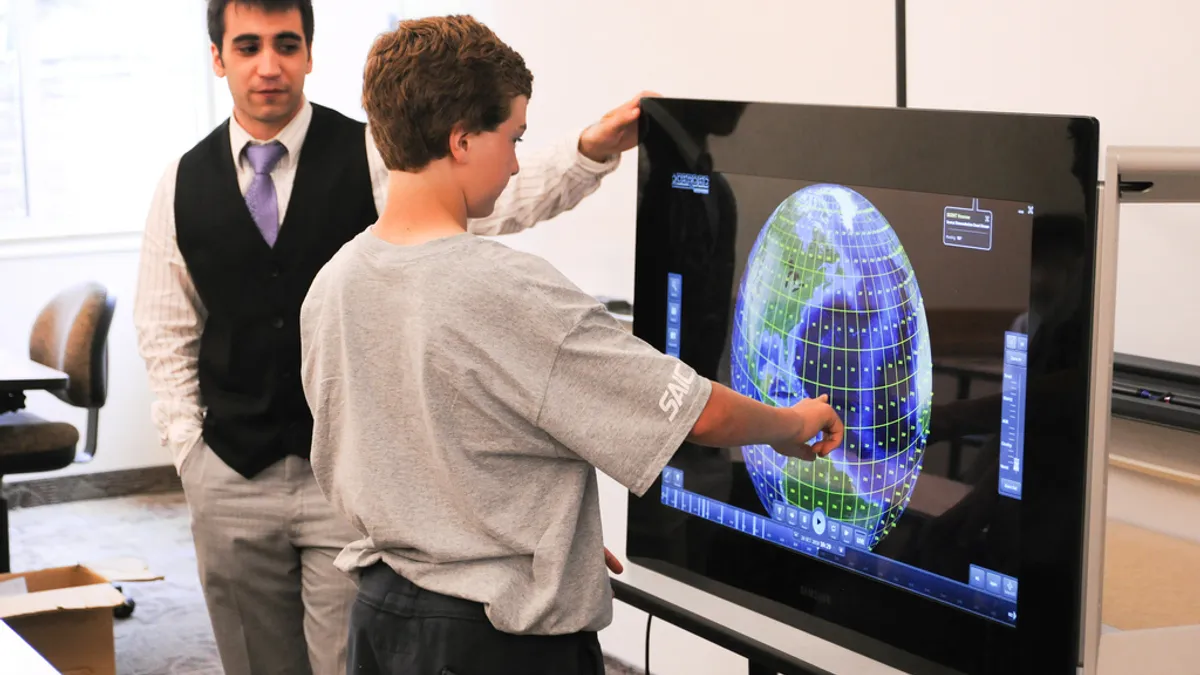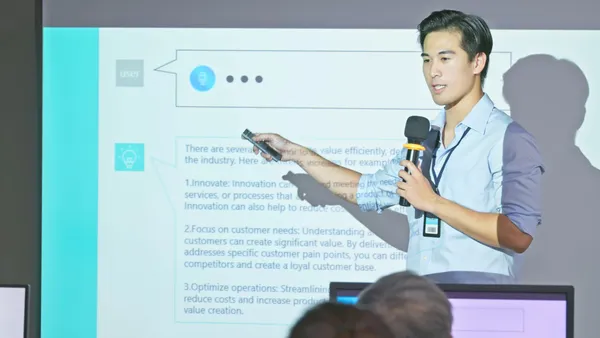Dive Brief:
-
To make the most out of opportunities for teachers to try new ed tech and participate in training, Austin Independent School District (Texas) Technology Officer for Learning and Systems Kevin Schwartz tells EdScoop that it's essential to create a "path to yes."
-
Having a clear pathway to approval for the use of new tools in the classroom — rather than being wary of experimentation and denying educators up front as a "department of no" — prevents educators from going around the district to use new tools "without understanding the consequences."
-
The vetting process has helped Schwartz assist educators in the 130-school, 80,000-student district in utilizing "internet of things" devices while maintaining data privacy, equity and responsible tech use.
Dive Insight:
Educators are inundated with pitches from vendors, but they need to know how to select which products work best for their specific needs. For example, technology like 3D printers can evolve so fast that they become obsolete two years after the purchase, resulting in wasted funds.
Giving teachers tools to navigate the tech buying process empowers them to make better decisions. However, administrators also need to seek teachers' input along the way, finding out what they need most and matching them to the right tools.
It’s also important to determine whether new devices will work with the technology that is already available. For example, if a school has used Apple products and wants to switch to Windows devices, it should consider whether software in use will work across both. Also increasingly critical is interoperability — the ability of platforms and software in use to share the same data sets without requiring manual input between any two.
Districts must also ensure any new tech is secure and can protect that data — a task much easier said than done. Education is among the most popular targets for hackers, and 122 K-12 cybersecurity threats were reported last year alone. Experts suspect many more incidents went unreported.












